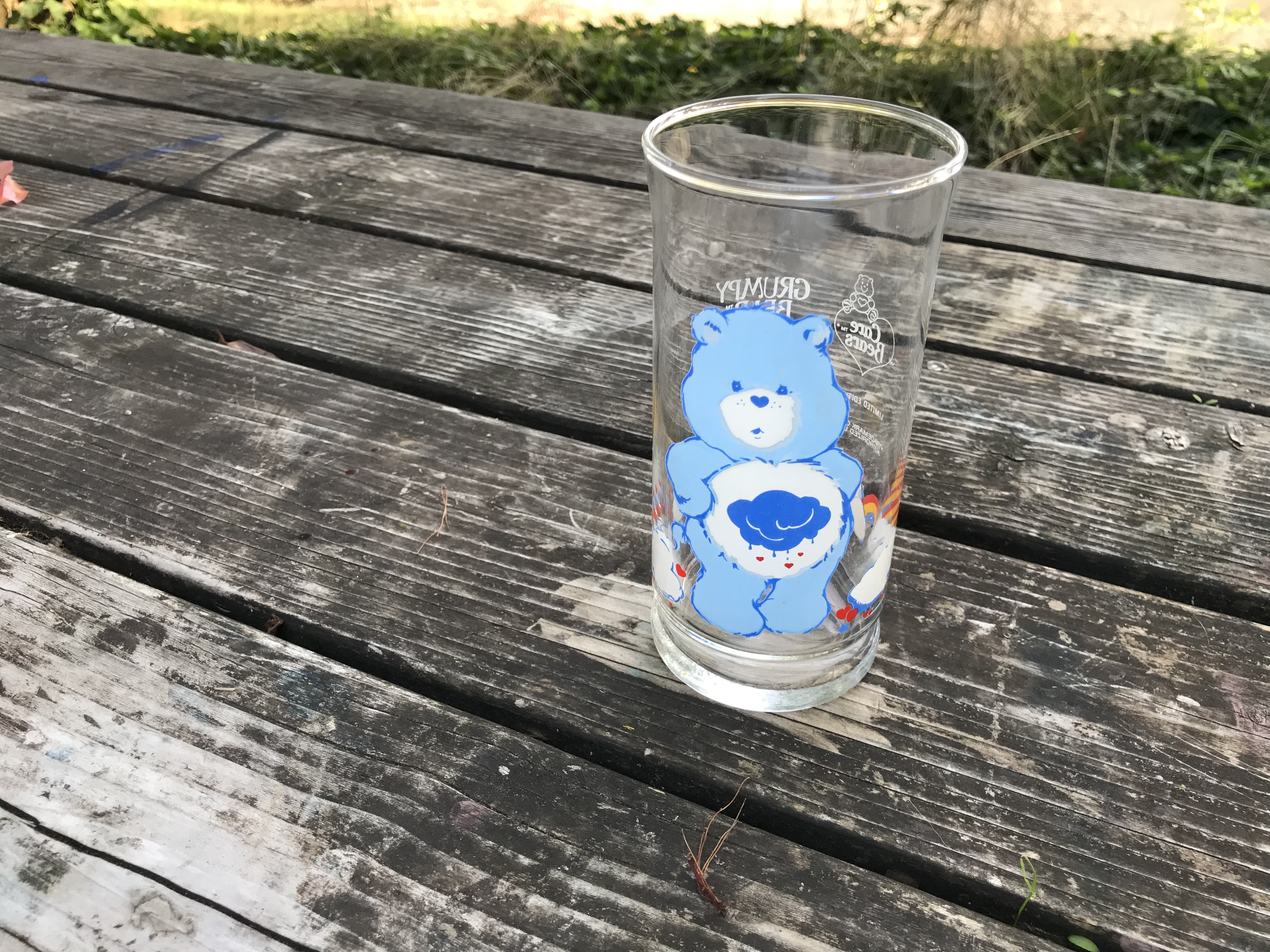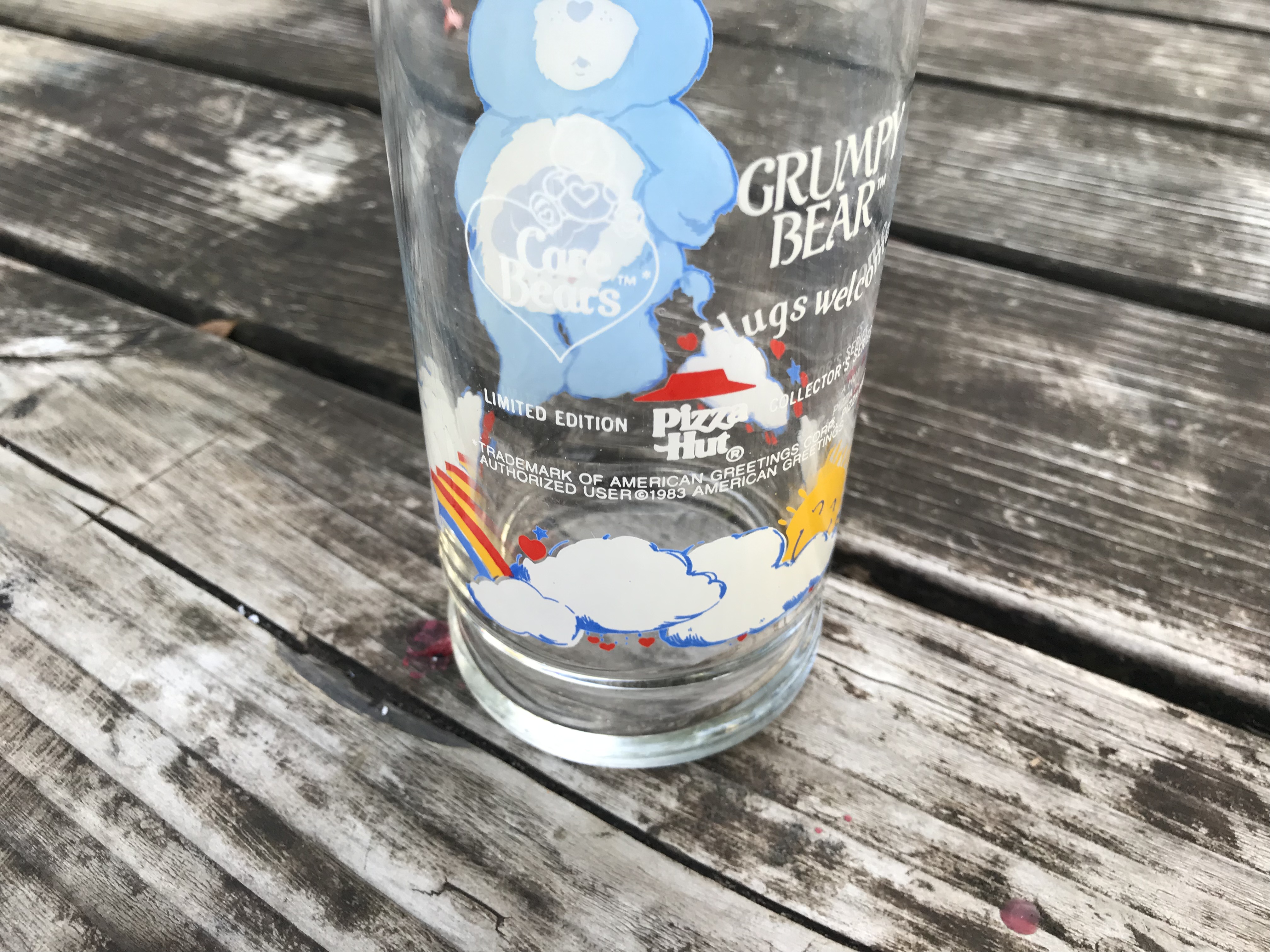1983 Pizza Hut Care Bear “Grumpy Bear” glass: 122,900 ppm Lead when tested with an XRF instrument (90 ppm is unsafe — did you have these?)
For those new to this website:
Tamara Rubin is a multiple-federal-award-winning independent advocate for childhood Lead poisoning prevention and consumer goods safety, and a documentary filmmaker. She is also a mother of Lead-poisoned children (two of her sons were acutely Lead-poisoned in 2005). Since 2009, Tamara has been using XRF technology (a scientific method used by the U.S. Consumer Product Safety Commission) to test consumer goods for toxicants (specifically heavy metals — including Lead, Cadmium, Mercury, Antimony, and Arsenic). All test results reported on this website are science-based, accurate, and replicable. Items are tested multiple times to confirm the test results for each component tested. Tamara’s work was featured in Consumer Reports Magazine in February of 2023 (March 2023 print edition).
When tested with an XRF instrument, this blue “Care Bear” collectable drinking glass from Pizza Hut (1983) had the following readings:
Dark blue tummy cloud on the glass pictured here:
- Lead (Pb): 122,900 +/- 5,200 ppm
- Cadmium (Cd): 3,224 +/- 250 ppm
- Zinc (Zn): 321 +/- 64 ppm
- Titanium (Ti): 14,400 +/- 1,000 ppm
- Cobalt (Co): 4,269 +/- 363 ppm
The amount of Lead that is considered illegal (and unsafe) in a newly manufactured item intended for use by children is anything 90 ppm Lead or higher in the paint, coating, or glaze, and anything 100 ppm Lead or higher in the substrate. This glass is 122,900 ppm Lead in the paint. These glasses were indisputably intended for use by children — and are, it turns out, still being used by children all over the country today (because moms who are in their 30s have saved them to had down to their children, not knowing they are painted with incredibly high Lead-content paint).
Wait. What? Cadmium? Isn’t that poisonous?!
This glass is also positive for 3,224 ppm Cadmium. Cadmium causes cancer (it is classified as a “known carcinogen”) and, for context, is illegal in consumer goods in Denmark at levels of 75 ppm or higher, (and here, in the U.S. — where, incredibly, there is still no Federal regulation prohibiting carcinogen in consumer goods — it is illegal in the State of Washington at 40 ppm or higher).
All results reported on this site are science-based and replicable. Testing is conducted for a minimum of 60 seconds per component unless otherwise noted. The XRF instrument used is a Niton XL3T, the same instrument used by the United States Consumer Product Safety Commission (CPSC) for testing for Lead in consumer goods.
Tamara Rubin
#LeadSafeMama
Never Miss an Important Article Again!
Join our Email List











Dang! I used to have all four of those glasses! My parents and I kept them and regularly used them up until a few years ago when I got rid of all but the Grumpy Bear glass. (Because he was my favorite, lol!) I finally got rid of the Grumpy Bear glass a year or two ago, and I’m glad I did! But I worry about who could have ended up with it though. 🙁
Ugh. My sister and I had these and some Strawberry Shortcake glasses as kids. I want to go to all the local thrift stores and quarantine all their leaded items for them.
Hi Riha – Thank you for commenting. Did you see the Strawberry Shortcake post? Here’s the link for others who read this (and in case you did not): https://tamararubin.com/2019/02/vintage-1980-strawberry-shortcake-collectable-juice-glass-65800-ppm-lead-2622-ppm-cadmium-77-ppm-mercury/
My son and I were thinking of creating “Caution Lead Hazard” stickers that we (and others) can stick everywhere we see stuff like this.
Tamara
SUCH a good idea!
Hi! I’m assuming the same assumption can be made for all of the characters since there’s six glasses in total?
All
To be completely forthcoming, it sounds as though you tested the dark blue tummy cloud of the outside paint and reported those values. Do you have any readings for the inside of the glass? I’m curious if it’s just the paint that is the issue, or the entirety of the vessel? I, too, have these in my cabinet saved from my childhood.
Please read this: https://tamararubin.com/2020/07/if-the-lead-is-only-on-the-outside-of-my-dish-measuring-cup-mixing-bowl-etc-why-does-it-matter-that-it-has-lead/
And this:
https://tamararubin.com/2017/11/decorated-glassware/